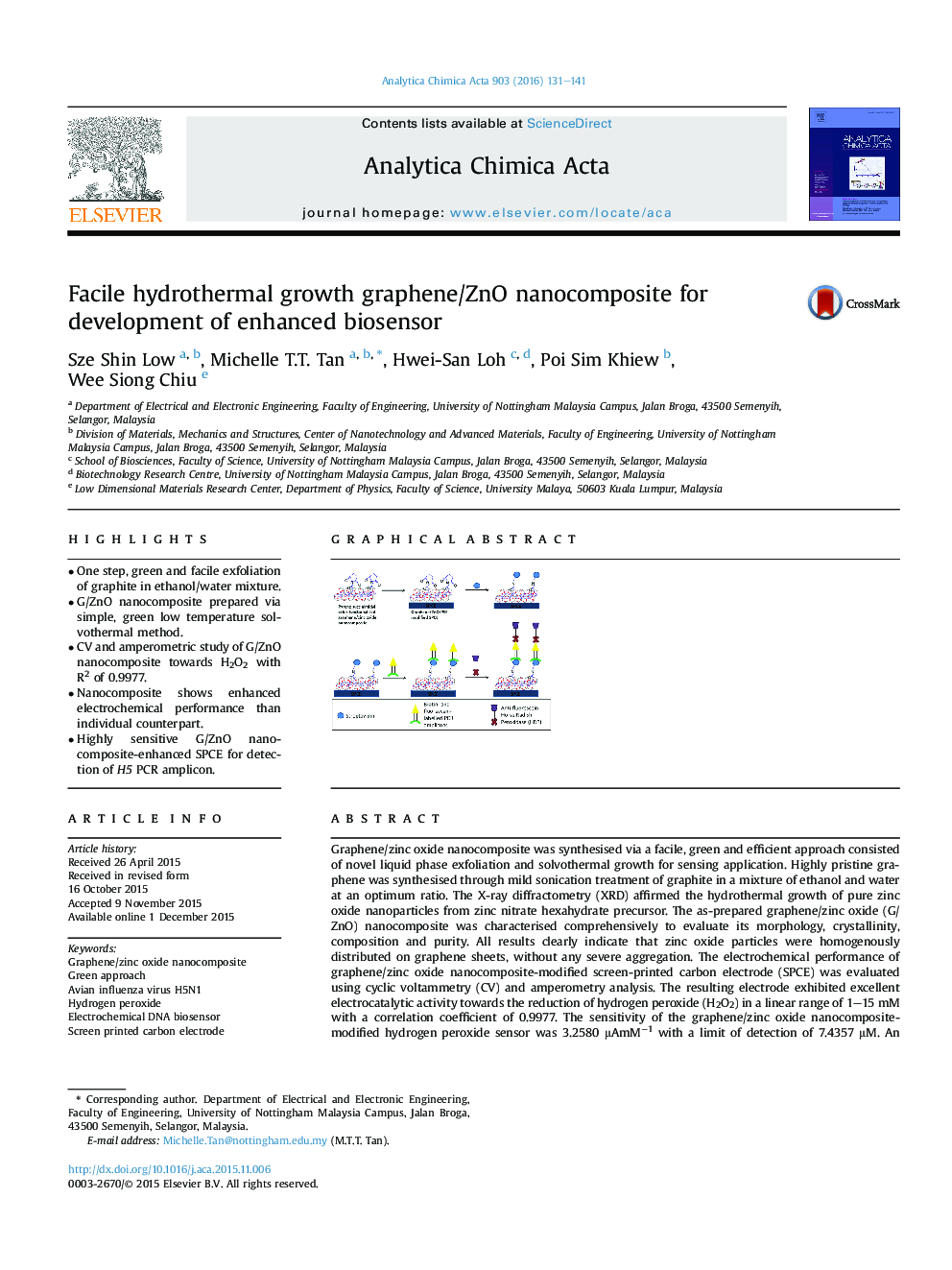| کد مقاله | کد نشریه | سال انتشار | مقاله انگلیسی | نسخه تمام متن |
|---|---|---|---|---|
| 1163120 | 1490929 | 2016 | 11 صفحه PDF | دانلود رایگان |

• One step, green and facile exfoliation of graphite in ethanol/water mixture.
• G/ZnO nanocomposite prepared via simple, green low temperature solvothermal method.
• CV and amperometric study of G/ZnO nanocomposite towards H2O2 with R2 of 0.9977.
• Nanocomposite shows enhanced electrochemical performance than individual counterpart.
• Highly sensitive G/ZnO nanocomposite-enhanced SPCE for detection of H5 PCR amplicon.
Graphene/zinc oxide nanocomposite was synthesised via a facile, green and efficient approach consisted of novel liquid phase exfoliation and solvothermal growth for sensing application. Highly pristine graphene was synthesised through mild sonication treatment of graphite in a mixture of ethanol and water at an optimum ratio. The X-ray diffractometry (XRD) affirmed the hydrothermal growth of pure zinc oxide nanoparticles from zinc nitrate hexahydrate precursor. The as-prepared graphene/zinc oxide (G/ZnO) nanocomposite was characterised comprehensively to evaluate its morphology, crystallinity, composition and purity. All results clearly indicate that zinc oxide particles were homogenously distributed on graphene sheets, without any severe aggregation. The electrochemical performance of graphene/zinc oxide nanocomposite-modified screen-printed carbon electrode (SPCE) was evaluated using cyclic voltammetry (CV) and amperometry analysis. The resulting electrode exhibited excellent electrocatalytic activity towards the reduction of hydrogen peroxide (H2O2) in a linear range of 1–15 mM with a correlation coefficient of 0.9977. The sensitivity of the graphene/zinc oxide nanocomposite-modified hydrogen peroxide sensor was 3.2580 μAmM−1 with a limit of detection of 7.4357 μM. An electrochemical DNA sensor platform was then fabricated for the detection of Avian Influenza H5 gene based on graphene/zinc oxide nanocomposite. The results obtained from amperometry study indicate that the graphene/zinc oxide nanocomposite-enhanced electrochemical DNA biosensor is significantly more sensitive (P < 0.05) and efficient than the conventional agarose gel electrophoresis.
Figure optionsDownload as PowerPoint slide
Journal: Analytica Chimica Acta - Volume 903, 15 January 2016, Pages 131–141